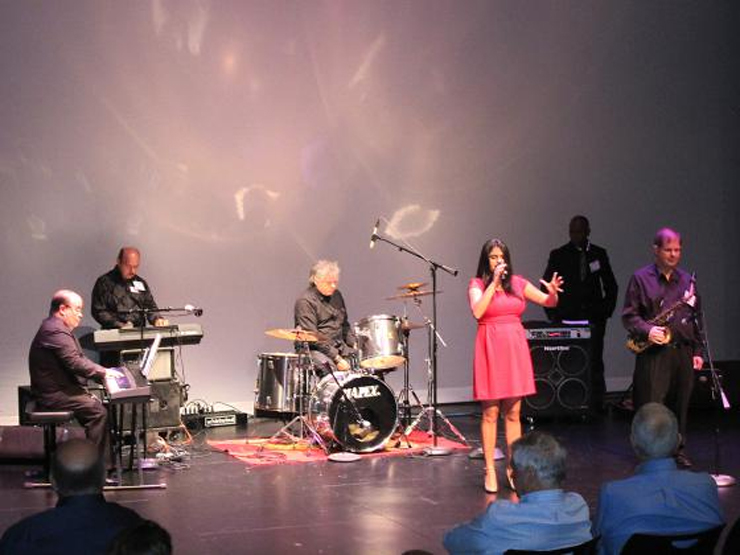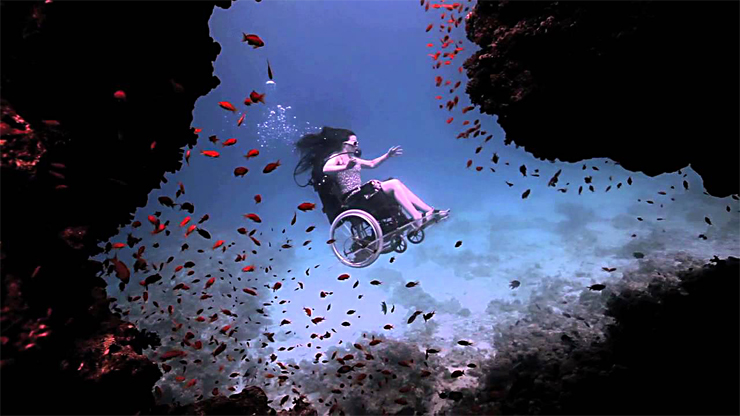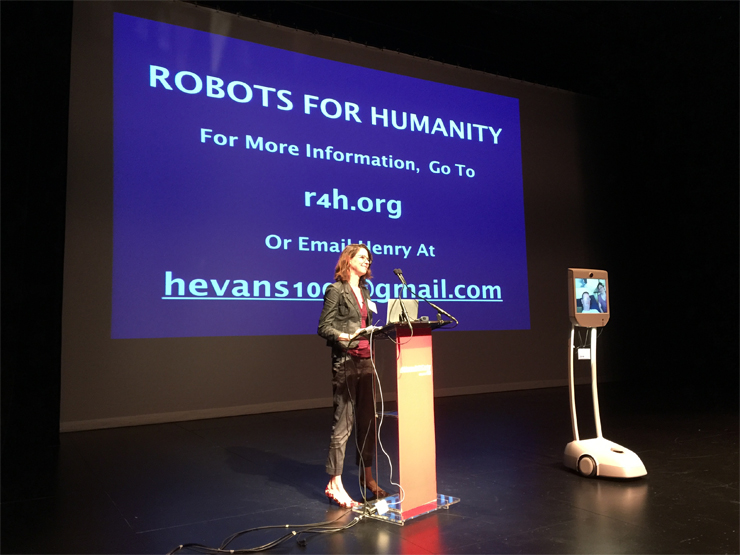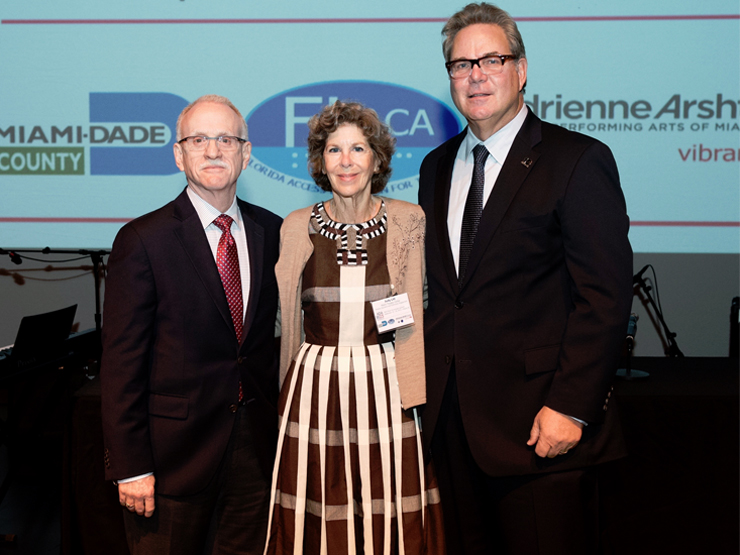
Natalia Sulca, Miami Lighthouse for the Blind, Better Chance Music Production Program.
Two days at the Adrienne Arsht Center for the Performing Arts in Miami heralded a significant Miami moment in underlining our dedication to universal access to the arts and beyond.
Twenty five years ago the U.S. passed the act protecting the civil rights of individuals with disabilities. The Miami-Dade County Department of Cultural Affairs, as a national leader in arts accessibility, presented the ADA Silver Anniversary Summit along with the Florida Access Coalition for the Arts (FLACA) at the Arsht, honoring the significant 25 year milestone by taking the opportunity to underline hurdles overcome and exploring what’s still needed to fully incorporate our disabled community members. The summit was many faceted, well executed and placed Miami in good stead regarding the city's commitment to equal participation in the arts. Panel discussions, presentations and performances brought home how we all can benefit in these moments of reflection. The events were held on Sept. 24 and 25.
Two words stood out as the cornerstone of topics to emphasize: “inclusive” and “seamless.” ADA compliance professional and attorney Heidi Johnson Wright brought to our attention how it is imperative to insure a seamless event experience from the process of obtaining information and tickets, to arrival at the arts venue, easy access into the event and a well trained staff to guide the experience through to a positive conclusion. In order for all these aspects to be truly successful, all disabilities must be taken into account, whether it be wheelchair driven, aiding the blind with braille programming or providing tools for the hard of hearing to enjoy what we all enjoy, inclusively. A swiftly aging population is adding an exceedingly large number of people needing to find spaces accessible.

Still from video of artist, Sue Austen.
John Richards, President and CEO of the Arsht Center of Performing Arts, hosts of the event, stressed that the “need for advocacy and education (in this field) is endless.” He introduced Michael Spring as a “tireless champion of public enlightenment.” Spring is the Senior Advisor to the mayor and department director of Miami-Dade Cultural Affairs.
Valerie Fletcher, Executive Director of Boston’s Institute for Human Centered Design, waxed lyrical over the “impressive group of advocates in Miami.” Her presentation on design for the disabled was no less than thrilling presenting a whole new area to explore for architects and designers.

Robots for Humanity.
I quizzed a few attendees on their experience at the anniversary summit. Dr. Carol Hoffman-Guzman, Executive Director of the Arts at St John’s: “Participation was mandatory for all recipients of Miami-Dade arts grants.” After some groans as to how to fit yet another activity into overly busy days, Hoffman Guzman remarked, “I want to report, however, that not only did I learn a lot, but also I found it enjoyable. I thought it would be just a lot of rules and regulations for signage and new architectural structures that we couldn’t afford.”
Hoffman-Guzman said that the best parts of the conference for her were:
- Stories, both negative and positive, from disabled persons about their experiences in arts facilities.
- Enjoying several wonderful jazz pieces by a band from Miami Lighthouse for the Blind.
- Learning about the right and wrong ways to interact with disabled persons in your facilities verbally, body language, etc.
- Discovering that I fall into one of the many categories of ‘disabled’ because of my age of 71 years. So you all better treat me nice, you hear!! Don’t make me walk up 55 steps to your second floor.”

Michael Spring, Judy Litt and John Richards .
I happen to know Carol is quite mobile on all fronts, but we take her point.
And the report from participant John DeFaro, Executive Assistant, Tigertail Production: "For 14 years, from 2000 to 2014, Tigertail and Florida Dance Association produced danceAble, a nationally recognized mixed ability (able and non-able dance artists) festival in Miami. We brought leading mixed ability companies and artists to Miami from around the world. It was great to have a summit that follows in the lines of what Tigertail began over 15 years ago.”
There are myriad ways to aid in our quest to offer the joy of the arts to our entire community, be it design, technology or the ability to address issues with sensitivity and knowledge will go a long way in easing the isolation of those not able to circumnavigate in the manner set up for the majority.
 MAIN MENU
MAIN MENU

